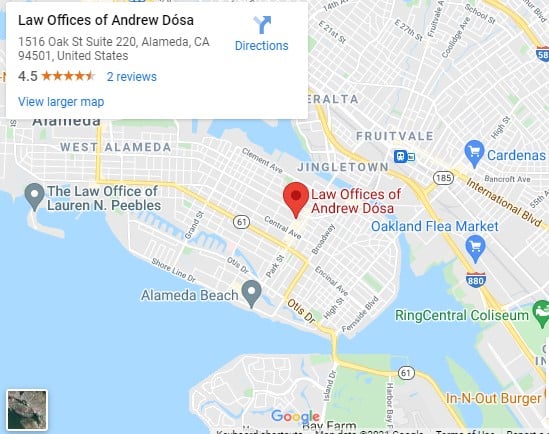Penal Code Section 1538.5 and Introductory Legal Authorities
This is the second of a series of articles about Motions to Suppress. We begin with the introductory part of our MEMORANDUM OF POINTS AND AUTHORITIES IN SUPPORT OF the Motion, cite Penal Code Section 1538.5, and describe evidence to be Suppressed. It is a standard argument that any evidence not obtained pursuance to the issuance of a warrant should be excluded. If there was no warrant, can we leave no doubt there is no exception
allowing the prosecutor to defeat the argument?
MEMORANDUM OF POINTS AND AUTHORITIES
Penal Code Section 1538.5, in pertinent part, provides:
(a) (1) A defendant may move for the return of property or to suppress as evidence any tangible or intangible thing obtained as a result of a search or seizure on either of the following grounds:
(A) The search or seizure without a warrant was unreasonable.
(B) The search or seizure with a warrant was unreasonable because any of the
following apply:
(i) The warrant is insufficient on its face.
(ii) The property or evidence obtained is not that described in the warrant.
(iii) There was no probable cause for the issuance of the warrant.
(iv) The method of execution of the warrant violated federal or state constitutional
standards.
(v) There was any other violation of federal or state constitutional standards.
INTRODUCTION: Evidence to be suppress
Evidence to suppress includes, but is not limited to, all physical (and intangible) evidence seized or obtained, including any biological samples seized, the results of any tests performed upon said evidence or samples, and all other evidence, such as statements/confessions/admissions by the Defendant.
This evidence was obtained as a result of the deprivations of the defendant’s liberty and right to privacy, including those resulting from the defendant’s detention and the search, pat-down, or frisk of the defendant’s person, including the seizure of the defendant’s breath/blood under false pretense, threat, and without first obtaining a warrant, and, the defendant’s arrest. See Ingersoll v. Palmer (1987) 43 Cal.3rd 1321.
Further, this evidence was obtained from a search, entry, and/or opening of place(s), including the vehicle (and its trunk) entered or invaded by the police in this case and the body, breath, and blood of the defendant.
The detention was unduly prolonged without reasonable cause. This resulted in an illegal warrantless search. Any alleged consent was invalid, and, in any event, negated by the unlawful detention. The continued search after his arrest was the fruit of the poisonous tree–the illegal detention.
This motion is also based upon the common law prohibition against discriminatory enforcement of laws. (Murgia v. Municipal Court (1975) 15 Cal. 3rd 286; See also Baluyet v. Superior Court (1996) 12 Cal. 4th 826.)
1. WAS THERE A WARRANT?
The court must start with the presumption that the warrantless search and seizure was
presumptively invalid.
The People have the burden to justify a warrantless search and seizure, Coolidge v. New Hampshire (1971) 403 U.S. 443, 455, Williams, supra @1297, because warrantless searches and seizures are presumptively illegal. (Katz v. United States (1967) 389 U.S. 347, 357, People v. Laiwa (1983) 34 Cal.3rd 711, 725; People v. Williams (1999) 20 Cal. 4th 119; Wilder v. Superior Court (l979) 92 Cal. App.3rd 90.) This bedrock 4th Amendment Constitutional doctrine rule emanates from the centuries-old hard fast rule that warrantless liberty infringements are “per se unreasonable,”
People v. Osband (1996) 13 Cal.4th 622, 673 [internal cite and quotation marks omitted], unless the People can show the narrow exception which applies thereto. (Welsh v. Wisconsin (1984) 466 U.S. 740, 749-750.)
Unfortunately, some bench officers erroneously start the suppression hearing with the default position that the warrantless intrusion complained of was reasonable unless and until the defense shows otherwise. But this is only true when the search is conducted pursuant to a presumptively valid search warrant. ([ A] search conducted under color of a warrant is not ‘reasonable per se,’ but may be unreasonable in the constitutional sense on a number of grounds (that the defendant would have an affirmative duty to show in the case of a search subject to a presumptively valid search warrant.” (People v. Cook (1978) 22 Cal. 3rd 67, at p. 97).
This application of the wrong rule creates a mindset that incorrectly places the burden upon the accused to show that his or her conduct was so normal that it did not raise any suspicion at all, and as such states the standard exactly backward.
The People’s burden must be carried, of course, with “evidence” (Penal Code §1538.5(c)), which has the same meaning for suppression motions as for trials. (Hewitt v. Superior Court (1970) 5 Cal.App.3rd 923, 927, cited app. in People v. Johnson (2006) 38 Cal.4th 717, 732-733.) There is no “probable cause” exception to the Evidence Code, nor any “just to explain the officer’s subsequent conduct” exception: “Subjective intentions [of the police officers/government agents] play NO ROLE in … Fourth Amendment analysis.” Whren v. United States (1996) 517 U.S. 806, 813 [emphasis added]. To say there is “NO ROLE,” should be obvious, but apparently, there has been
some confusion. Even when police could rely on hearsay [a rule which we do not think survives the post-Prop 8 requirement for objective/non-subjective evidence], there must be a lawful foundation for the evidence or statements beforehand. Probably cause, an objective standard must exist. People v. Pease (1966) 242 Cal.App.2d 442, 446-448; Ojeda v. Superior Court (1970) 12
Cal.App.3d 909, 920-921.
The Harvey/Madden rule, outlined in People v. Harvey, (1958) 156 Cal.App.2d 516, 523, requires authentication when an officer’s observations are gleaned from an indirect source, such as a caller to dispatch which eventually is relayed to the officer. The party proffering the evidence must prove the source of the information justified the arrest. (People v. Ramirez, (1997) 59 Cal.App.4th 1548. 1553.)
Mr. Smith objects to the admission of any hearsay evidence being admitted on the issues of ‘reasonable suspicion’, or ‘probable cause’ when it is in the form of dispatch transmissions. Certainly, Mr. Smith objects to double hearsay of any non-police informants or 911 callers on the same grounds.
Got Legal Concerns? Consult our Criminal Defense Attorney!
Our experienced Alameda criminal defense attorney can help you solve your legal problems. Schedule a consultation with our law firm today!




